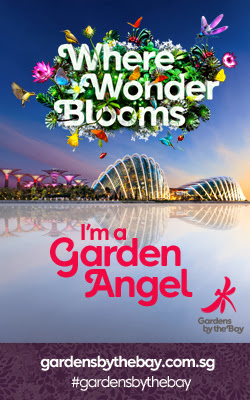Singapore Motorshow 2016
Suntec Singapore
January 2016
Following the success from the 2015 exhibit, the Singapore Motorshow returns for a second consecutive year from 14-17 January 2016 at Suntec City Convention & Exhibition Centre.
Making its debut at the Singapore Motorshow 2016 is the Subaru VIZIV 2
concept car, a next generation crossover vehicle, which similarly to its
predecessor, the VIZIV, takes its name from “Vision for Innovation”.
Colours abound at the various booths...
However, white seems to be the predominant colour...
It does help to have attractive models posing beside the cars, always ready with a smile...
Not to mention key attractions like game booths and MediaCorp personalities...
There were also photo opportunities with the friendly Russ Swift,
who wowed the crowd with his stun driving skills...
Monsters Of The Sea - A Journey Into The Depths
6:57 PM
Dinosaurs, Fascinating, Fishes, Jurong, reptiles, Science Centre, West
Science Centre
Jurong East
January 2016
In days of yore, when dinosaurs ruled the Earth, sea monsters thronged the deep blue seas. With a single themed exhibition, Science Centre Singapore brings the world of massive marine beings to life with 14 prehistoric marine monsters side by side with their present-day sea counterparts with informative displays and interesting stories on mythical sea creatures.
Jurong East
January 2016
In days of yore, when dinosaurs ruled the Earth, sea monsters thronged the deep blue seas. With a single themed exhibition, Science Centre Singapore brings the world of massive marine beings to life with 14 prehistoric marine monsters side by side with their present-day sea counterparts with informative displays and interesting stories on mythical sea creatures.
“Monsters of the Sea will heighten interest among our visitors to discover more about these mighty marine animals - their ways of life, survival and possible causes of extinction. Perhaps this would initiate some to embark on a journey of revolutionary research on environmental change or conservation in future.”
Pliosaurus was a massive marine reptile with a short necks and a large head with formidable teeth. Built for speed, this sea monster had limbs that were paddle-shaped to help them move swiftly through the water...
Educational panels illustrate key learning point for adults and children alike -
This panel here illustrates the difference between bioluminescence and biofluorescence,
and drives in the point further with glow-in-the-dark jellyfish and UV lights on pebbles...
Known to have the strongest jaw bite amongst four-footed animals, Purussaurus was an apex predator at the top of the food chain, and is capable of attacking very large vertebrates. with conical teeth curved backwards and slightly inwards...
A life-sized submersible with cardboard figures for photogenic poses...
Tylosaurus (or KnobLizard) was dubbed the “Predator of the late Cretaceous Seas”. It was ate sharks, flightless birds, large marine reptiles like Plesiosaurs, and other Mosasaurs...
For each letter of the alphabet, there is an accompany panel to list a monster from the depths...
A predator of the upper oceans, Mosasaurus tended to wait for other marine reptiles to surface for air, before using its tail to provide a quick burst of speed to launch its attack. Using its fearsome array of teeth, it ensures that any prey sliding down through its throat could not escape easily...
Young children can create their very own take-home monster in a jar or vibrating isopod at $5 each at this hands-on counter and learn about electron flow and buoyancy here...
Other fun stations to dig in the sand for fossils, fix a monster jigsaw,
or test your strength to generate enough "bite force"...
or test your strength to generate enough "bite force"...
With a name meaning "Big Tooth", Megalodon lived during the Miocene period and had huge teeth that grew up to 18cm. These serrated and multiple rows of teeth allowed the sea monster to latch onto its prey tightly and rip it apart before swallowing...
Finally, be awed by the fascinating array of fossils from Singapore's very own Fossil Hunters...
The “Monsters of the Sea” exhibition will be held at the Science Centre Annexe Hall till 28 February 2016. For Singapore citizens and permanent residents, exhibition tickets are priced at $16 and $20 for children (3 to 12 years old) and adults respectively. Child and adult tickets are priced at $20 and $25 respectively for all other visitors. More information is available at www.science.edu.sg/exhibitions/Pages/MonstersoftheSea.aspx.
Subscribe to:
Posts (Atom)
















